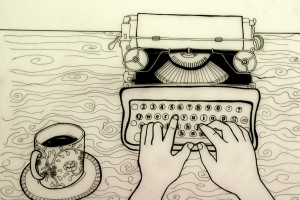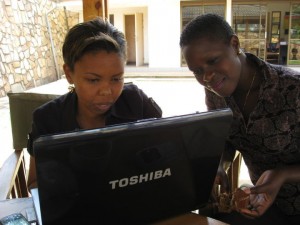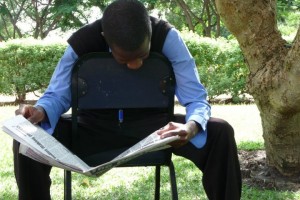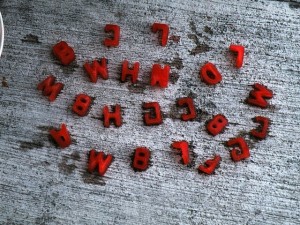Tips for writing so readers keep reading
 Good writing requires more than just talent. As with any craft, there are techniques you can learn. Luna Bolivar has been writing and copyediting for years. Here are some of her pointers for producing great copy.
Good writing requires more than just talent. As with any craft, there are techniques you can learn. Luna Bolivar has been writing and copyediting for years. Here are some of her pointers for producing great copy.
Understand what you write
That may seem obvious, but journalists often know only very little about what they’re writing. Don’t fool yourself into thinking readers won’t notice. Instead, take the time to familiarize yourself with the subject matter. I remember the time I was looking for an explanation of the eurozone bailout fund when it was a hot, new topic. Everything I found in wire reports and newspapers, whether online or print, all repeated the same mantra: a mass of technical jargon incomprehensible to lay people. Probably not even the authors understood what they were reporting. So instead I made a quick call to an institute and spoke to a real economics expert who was able to give me a straightforward explanation. That was just what I needed. And that brings me to the next point:
Ask! You’re a journalist!
“I once heard that South Pacific tortoises dance on three legs during the full moon as part of their mating ritual. But surely you already know that since you’re a journalist!” Nope, I didn’t know that. Journalists should be informed, but they don’t have to know everything about everything. We’re not walking encyclopedias. We should, however, know how to track down the people who do know a lot about a particular topic.
So be creative when it comes to searching for sources. You don’t have to keep going back to the usual suspects for all your research. Nowadays, the Internet makes that easy. While reading, searching and surfing you’ll come across all kinds of potential sources – and new, unanswered questions. Ask away! Don’t let your lack of knowledge hold you back.
What’s the story?
 By now you’ve researched, read up on your topic, asked questions and understood all the details, so you’re already half way there. If you approach your article with clear ideas and enough information, your writing will flow much more easily.
By now you’ve researched, read up on your topic, asked questions and understood all the details, so you’re already half way there. If you approach your article with clear ideas and enough information, your writing will flow much more easily.
You’ve probably collected more data then you can feasibly use. Separate the wheat from the chaff by weeding out any unnecessary information. You can follow rules, such as the hypothesis of thesis, antithesis, synthesis, or even break them if you like. But whatever you do, it’s important to have a clear idea of the story you want to tell and how you want to tell it.
Killer headlines
To be honest, I’m not good at writing headlines. I’ve read lots on the topic, but that hasn’t helped much. I simply don’t have a gift for them. But headlines are an essential part of the process. They can make or break your article. If headlines and subheads pose as great a problem for you as they do for me, there’s only one solution: Seek out a colleague who’s good at writing headlines and be very kind to that person. He or she could become an invaluable mentor!
Start out strong
 The teaser and intro are essential. Even after a riveting headline you could still lose your readers’ interest. Straight news items don’t leave much room for movement, but if you’re writing in a different genre, such as an opinion piece, reportage or a feature story, be creative, courageous and innovative! The who/what/where/when/why/how questions and the inverted pyramid principle are the bread-and-butter tools of news writing. But in the freestyle parts of journalism you’re allowed to break the rules once in a while – if and when appropriate.
The teaser and intro are essential. Even after a riveting headline you could still lose your readers’ interest. Straight news items don’t leave much room for movement, but if you’re writing in a different genre, such as an opinion piece, reportage or a feature story, be creative, courageous and innovative! The who/what/where/when/why/how questions and the inverted pyramid principle are the bread-and-butter tools of news writing. But in the freestyle parts of journalism you’re allowed to break the rules once in a while – if and when appropriate.
Surprise your readers, grab their attention so that they are compelled to read the next sentence, and the one after that, right through to the end.
Pace yourself. Don’t dish it out all at once.
I know that the 5Ws+1H are holy – and I’m not arguing for sacrilege. But not all the answers have to be packed into the very first sentence. Give your readers time to soak in the story, find their way around, contemplate what you’re saying and catch their breath on occasion. If there’s a lot of technical or complex information, it’s an especially good idea to present it in doses. Find the right rhythm for your story, anticipating when your reader needs important details. If he has to wait too long, he’ll lose patience and stop reading. But a little suspense is by all means okay. In between the hard facts there’s room for a more human-interest touch, for example reporting on a particular patient’s fate in a story about flaws in the healthcare system.
Stay on track
Nothing is more important than maintaining a logical train of thought. Playing with unexpected intros and different ways of storytelling doesn’t mean opening the door to anarchy. Every text needs a structure. Its parts must form a whole. Make the transitions – from the extraordinary to the commonplace, from the hard facts to the personal experiences – flow coherently and logically. Your reader should be able to follow how you move from A to B. Don’t let him get stuck or stumble. The path you take him down should be clearly discernible and point to an end. That way he’ll be willing to go along for the journey.
Wrapping up
T he conclusion is equally as important as your introduction. After all, you don’t want to give your readership a sense of disappointment after having reached the finish line. Besides, you’d like them to come back to read your next piece, too. So muster up all your creativity to write a strong ending.
he conclusion is equally as important as your introduction. After all, you don’t want to give your readership a sense of disappointment after having reached the finish line. Besides, you’d like them to come back to read your next piece, too. So muster up all your creativity to write a strong ending.
You can wrap up your article by drawing a conclusion, if that’s possible, or by posing a question if there are still open aspects, or with a brief summary if the topic is complex. A common and often useful method is to end with a quote. During interviews, take note of any strong, insightful remarks. They might make a good beginning or ending to your story. If you’ve got literary flair, this is a good time to exhibit your skills. But don’t be overly dramatic.
Regardless of how you choose to finish, make sure that the closing fits in with the rest of your story. Don’t end abruptly. That would be like leaving a gaping hole for your readers to fall into, never to be seen again.
Author: Luna Bolivar




Feedback